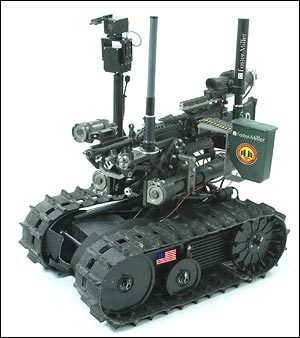Researchers debate where the fault divides between the operator and the machine
Charles Q. Choi
space.comFri, 29 Feb 2008 00:00 UTC
Mysteriously, five spacecraft that flew past the Earth have each displayed unexpected anomalies in their motions.
It's flu season, and you're feeling woozy. Have you caught that thing that's going around?
To find out, head over to Who is Sick?, a Google map-based tool that lets users report their symptoms. Plug in your zip code to find nodes of contagion near you.
Or maybe you're depressed. Misery loves company. Check the local emotional temperature at We Feel Fine to see data-mined sentiments from blogs, organized geographically.
Maps are everywhere these days. The ubiquity of global positioning systems (GPS) and mobile directional devices, interactive mapping tools and social networks is feeding a mapping boom. Amateur geographers are assigning coordinates to everything they can get their hands on - and many things they can't. "Locative artists" are attaching virtual installations to specific locales, generating imaginary landscapes brought vividly to life in William Gibson's latest novel, Spook Country. Indeed, proponents of "augmented reality" suggest that soon our current reality will be one of many "layers" of information available to us as we stroll down the street.
Like other technological innovations, this trend gives with one hand and takes with the other.
For some, mapping has become a vibrant new language - a way to interpret the world, find like-minded folks and make fresh, sometimes radical, perspectives visible. For others, maps portend threats to privacy and freedom of movement. Just see Privacy International's Map of Surveillance Societies Around the World, which classifies the United States as an "endemic surveillance society."
Naval warships might look like all-powerful vessels but they are also highly vulnerable to being spotted by the enemy. That fear of being detected has led the military to develop new stealth technologies that allow ships to be virtually invisible to the human eye, to dodge roaming radars, put heat-seeking missiles off the scent, disguise their own sound vibrations and even reduce the way they distort the Earth's magnetic field, as senior lecture in remote sensing and sensors technology at Britannia Royal Navy College, Chris Lavers, explains in March's Physics World.
Charles Darwin maintained that the domesticated chicken derives from the red jungle fowl, but new research from Uppsala University now shows that the wild origins of the chicken are more complicated than that.
The researchers mapped the genes that give most domesticated chickens yellow legs and found to their surprise that this genetic heredity derives from a closely related species, the grey jungle fowl. The study is being published today in the Web edition of PLoS Genetics.
"Our studies show that even though most of the genes in domesticated fowls come from the red jungle fowl, at least one other species must have contributed, specifically the grey jungle fowl," says Jonas Eriksson, a doctoral student at Uppsala University.
Those beautiful snowflakes drifting out of the sky may have a surprise inside bacteria. Most snow and rain forms in chilly conditions high in the sky and atmospheric scientists have long known that, under most conditions, the moisture needs something to cling to in order to condense.
Now, a new study shows a surprisingly large share of those so-called nucleators turn out to be bacteria that can affect plants.
An important discovery has been made with respect to the mystery of "handedness" in biomolecules. Researchers led by Sandra Pizzarello, a research professor at Arizona State University, found that some of the possible abiotic precursors to the origin of life on Earth have been shown to carry "handedness" in a larger number than previously thought.
The work is being published in this week's Early Edition of the Proceedings of the National Academy of Sciences (PNAS). The paper is titled, "Molecular asymmetry in extraterrestrial chemistry: Insights from a pristine meteorite," and is co-authored by Pizzarello and Yongsong Huang and Marcelo Alexandre, of Brown University.
Nic Fleming
TelegraphWed, 27 Feb 2008 22:05 UTC

|
| ©Unknown
|
| US forces recently deployed remote-controlled robots equipped with automatic weapons in Iraq
|
The world is sleepwalking into an international robot arms race, a leading expert will warn today.
Prof Noel Sharkey fears increased research and spending on unmanned military systems by countries including the US, Russia, China and Israel will lead to the use of autonomous battlefield robots that can decide when to kill within a decade.
Geologists have detected a new continuous seismic signal in the Earth, but its cause is anybody's guess
Listen closely, and you'll hear the Earth humming - in not just one note, but two. The source of this second signal is a mystery.
For around a decade we've known about Earth's quiet "vertical" hum, probably caused by the steady thumping of deep waves on the ocean floor. Now a team in Germany has discovered a second "horizontal" note, too, and nobody knows what's causing this new signal.
An international team led by Physics and Chemistry teams from the Faculty of Science and Technology at the University of the Basque Country (UPV/EHU) and directed by Professor Jose Javier Saiz Garitaonandia, has achieved, by means of a controlled chemical process, that atoms of gold, silver and copper - intrinsically non-magnetic (not attracted to a magnet) - become magnetic. The article has been published in the February issue of the prestigious international magazine in nanotechnology, Nanoletters (Vol.8, No. 2, 661-667 (2008)).
